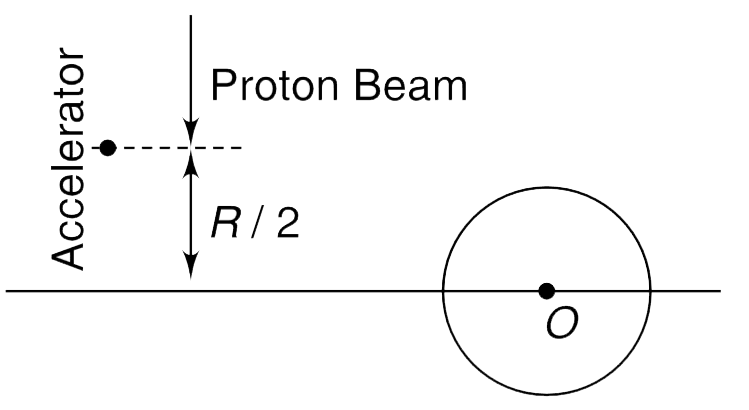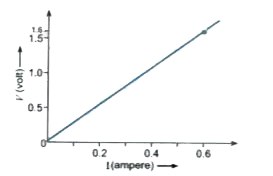(a) Suppose a beam of 4.5 eV protons strikes a potential energy barrier of height 6.0 eV and thickness 0.70 nm, at a rate equivalent to a current of 1000 A. How long would you have to wait-on average-for one proton to be transmitted? (b) How long would you have to wait if the beam consisted of electrons rather than protons?
(a) 3.37×10111s≈10104y, (b) 2.1×10−19s
Topper's Solved these Questions
- PHOTONS AND MATTER WAVESBOOK - RESNICK AND HALLIDAYCHAPTER - PHOTONS AND MATTER WAVESEXERCISE - PRACTICE QUESTIONS (Single Correct Choice Type)
47 Videos
- PHOTONS AND MATTER WAVESBOOK - RESNICK AND HALLIDAYCHAPTER - PHOTONS AND MATTER WAVESEXERCISE - PRACTICE QUESTIONS (More than One Correct Choice Type)
5 Videos
- PHOTONS AND MATTER WAVESBOOK - RESNICK AND HALLIDAYCHAPTER - PHOTONS AND MATTER WAVESEXERCISE - Check points
3 Videos
- OSCILLATIONSBOOK - RESNICK AND HALLIDAYCHAPTER - OSCILLATIONSEXERCISE - Practice Questions
57 Videos
- RELATIVITYBOOK - RESNICK AND HALLIDAYCHAPTER - RELATIVITYEXERCISE - PRACTICE QUESTIONS (Integer Type)
5 Videos
Similar Questions
The half life of .90Th225 is 8 minutes How many half lives are there in 2 hours ? How long would you have to wait before there is less than 1 % of .90Th225 left in the sample ?
View SolutionSuppose that the electron in Fig. having a total energy E of 5.1 eV, approaches a barrier of height Ub=6.8eV and thickness L = 750 pm.
(a) What is the approximate probability that the electron will be transmitted through the barrier, to appear (and be detectable) on the other side of the barrier?
(b) What is the approximate probability that a proton with the same total energy of 5.1 eV will be transmitted through the barrier, to appear (and be detectable) on the other side of the barrier?
View Solution
Knowledge Check
Suppose you are riding a stationary exercise bicycle, and the electronic meter indicates that the wheel is rotating at 9.1rad/s. The wheel has a radius of 0.45 m. If you ride the bike for 35 min, how far would you have gone if the bike could move?
A3900 mB7800 mC4300 mD8600 mHelium (He), a monatomic gas, fills a 0.010 m3 container. The pressure of the gas is (6.2×105 Pa). How long would a 0.25 hp engine have to run (1 hp = 746 W) to produce an amount of energy equal to the internal energy of this gas?
A1.0×101sB5.0×101sC2.5×101sD4.3×101s

A proton accelerator produces a narrow beam of protons, each having an initial speed of v0. The beam is directed towards an initially uncharged distant metal sphere of radius R. The sphere is fixed and centered at point O. The initial path of the beam is at a distance of (R/2) from the centre, as indicated in the diagram. The protons in the beam that collide with the sphere get absorbed and cause it to become uniformly charged. The subsequent potential field at the accelerator due to the sphere can be neglected. Assume the mass of the proton as mP and the charge on it as e.
(a) After a long time, when the potential of the sphere reaches a constant value, sketch the trajectory of proton in the beam. (b) Once the potential of the sphere has reached its final, constant value, find the minimum speed v of a proton along its trajectory path. (c) Find the limiting electric potential of the sphere.
View SolutionA potassium foil is a distance r=3.5m from an isotropic light source that emits energy at the rate P=1.5W. The work function F of potassium is 2.2 eV. Suppose that the energy transported by the incident light were transferred to the target foil continuously and smoothly (that is, if classical physics prevailed instead of quantum physics). How long would it take for the foil to absorb enough energy to eject and electron? Assume that the foil totally absorbs all the energy reaching it can that the to - be-ejected electron collects energy from a circular patch of the foil whose radius is 5.0×10−11m, about that of a typical atom.
View SolutionAssuming ideal gas behaviour, how many atoms of Ar are contained In a typical hunin breath of 0.5L at 1.0 bar and 27∘C? Air consists of 1% Ar atoms. Assuming that the argon atoms from last breath ot Plato have been distributed randomly throughout the atmosphere (5×1018m3). How long would it take to breadth one of the atoms? A typical adult breath rate is 10 min−1.
View SolutionAssuming ideal gas behaviour, how many atoms of Ar are contained in a typical human breath of 0.5 litre at 1.0 bar and 37∘C ? Air consists of 1% Ar atoms. Assuming that the argon atoms from the last breath of Plato have been distributed randomly throughout the atmosphere (5×1018m3) , how long would it take to breathe one of these atoms? A typical adult breath rate is 10min−1
View Solution(a) Name an instrument that measures electric current in a circuit. Define the unit of electric current.
(b) What do the following symbols represent in a circuit diagram?

(c) An electric circuit consisting of a 0.5 m long nichrome wire XY, an ammeter, a voltmeter, four cells of 1.5 V each and a plug key was set up.
(i) Draw the electric circuit diagram to study the relation between the potential difference maintained between the points 'X' and 'Y' and the electric current flowing through XY.
(ii) Following graph was plotted between Vand I values using above circuit:

What would be the values of ratios when the potential difference is 0.8 V, 1.2 V and 1.6 respectively? What conclusion do you draw from these values?
View SolutionA metal plate is placed 5m from a monchromatic ligth
soure whose power output is 10−3W. Consider that a given ejected
photoelectron may collect its energy from a circular area of the plate as large as
ten atomic diameters (10−9m in radius. The energy required to remove an electron through the metal surface is about 5.0 eV. Assuming light to be a
wave, how long would it take for such a 'target' to soak up this much energy
from such a light source.
View Solution
